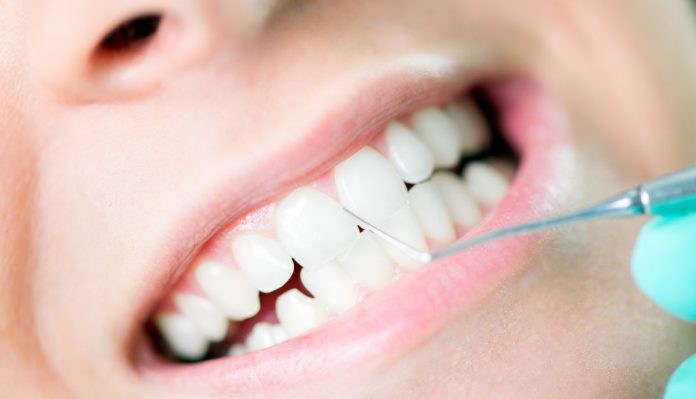Creating beautiful and healthy smiles takes more than just periodic cleanings at the dentist’s office. To keep your teeth and gums looking and feeling their best, you should also maintain good oral hygiene habits at home. The following guide provides step-by-step instructions on how to clean dental appliances correctly and thoroughly so you can prevent damage or further tooth decay. The following instructions will show you how to properly clean your dental appliances and keep them in the best possible condition to help you keep your smile healthy and strong.
Brush Your Teeth Before Wearing Your Appliance
Dental appliances are an important tool for your oral health, and they’re also a great way to improve your appearance. But you can’t wear them indefinitely. In order to keep them looking and working their best, it’s important that you take the time every day to give them a thorough cleaning. Here are some tips for how you should go about doing so:
1) Brush Your Teeth Before Wearing Your Appliance – It’s crucial that you brush before putting in an appliance because if there are any food particles or plaque on the surface of your teeth, they will get ground into the surface of the appliance while it is in place. This can cause damage over time that may not be seen until it’s too late. Brushing first removes these substances and prevents possible harm to your appliance.
2) Rinse Out Mouth – Once you’ve brushed, rinse out your mouth with water.
3) Apply Mouthwash- Another thing that makes sense before wearing an appliance is to use mouthwash after brushing but before inserting the appliance. Make sure it contains fluoride as this ingredient helps prevent tooth decay and cavities, which could lead to gum disease (especially if you have one or more of these conditions).
4) Place a Cotton Swab Inside Your Mouth- The last step is to insert a cotton swab inside your mouth in order to remove debris from under the device or between wires.
Rinse Routinely
Rinse your toothbrush after every use with lukewarm water. Hold the brush under the faucet for about five seconds and shake off excess water. Rinse it a second time, this time with mouthwash or baking soda and water. Leave it to air dry on a towel or its own stand. If you can’t find an open spot, try sticking the brush upright in a glass of cool tap water that’s deep enough so that only the head of the toothbrush is submerged. A container with holes will allow air to circulate around the bristles, keeping them from getting damaged by contact. And don’t forget to change out the water at least once a week! The FDA recommends replacing your toothbrush if it has been over three months since you last changed the water. It may also be worth swapping out your brush if it seems worn or frayed, or if there are noticeable scratches on the bristles.
Brush Your Appliance in the Morning
Dentists recommend brushing your appliance in the morning to remove plaque or bacteria that may have formed overnight. It can be difficult, but if you use a toothbrush with soft bristles and a pea-sized amount of toothpaste, you will make quick work of it. Be sure to brush all surfaces of the appliance including tongue blades and chewing surfaces. Rinse off any toothpaste residue thoroughly with water after brushing your appliance. If you are having trouble getting food out from between the teeth on your appliance, try using a dry toothbrush or floss to dislodge them. Listerine Mouthwash is also great for fighting against germs in between dental appliances and is recommended for those who wear their appliance at night as well as during the day. In addition, dentures should always be brushed with a toothbrush before wearing and cleaned every day by soaking in cold soapy water while scrubbing gently under running tap water.
The Right Way to Brush
Brushing your teeth is an important step in maintaining good oral health. But it’s not as easy as just spitting and rinsing. To ensure that you’re brushing properly, follow these steps:
Brush for two minutes at least twice a day, preferably after every meal and snack.
Use the right technique—hold the toothbrush at a 45° angle against the teeth with a gentle back-and-forth motion, using short circular strokes just under the gum line. Brush all surfaces of each tooth from chewing surface to biting surface.
Brush all surfaces of each tooth from chewing surface to biting surface. Brush your tongue to remove bacteria from this area that can cause bad breath or halitosis. Be sure to brush gently because your tongue may be sensitive due to its many nerves. Rinse your mouth and spit out any remaining toothpaste when you are finished brushing.
A lot of people don’t realize how important it is to clean their appliances before they use them on others–not only do they risk spreading bacteria but also contracting viruses like hepatitis B or C, HIV or even less common diseases like Hantavirus Pulmonary Syndrome (HPS). You can contract some of these viruses simply by touching someone else’s saliva, so if there are children around make sure everyone uses disposable gloves when cleaning their braces, dentures, crowns etc!
Give it Some Room to Breathe
Dental appliances are very important, but they can accumulate bacteria and germs in hard-to-reach places. This can lead to tooth decay and bad breath. To keep your dental appliance looking and smelling fresh, try these tips:
1) Brush your teeth after every meal or snack. 2) Rinse with mouthwash 2-3 times a day. 3) Floss once a day; use an interdental cleaner twice a day. 4) Brush your tongue with your toothbrush once a day; use a tongue scraper at least once per week. 5) Check the space between your teeth for any food particles that could cause plaque buildup, then rinse the area thoroughly. 6) Clean your teeth, gums and tongue daily with a non-alcoholic mouthwash that has no more than 20% alcohol content. Alcohol will dry out your mouth. 7) Use water instead of air when cleaning dentures or other removable appliances by soaking them in water, rubbing them gently with soap, rinsing them well and soaking them again until all residue is gone before putting them back into place. 8) Make sure you brush the inside of any removable appliance’s bowl as well as its top surface.
Meet the Dentist
Here are a few ways you can clean your dental appliances:
- Clean them with antibacterial soap and water. 2. Use an air sterilizer that has UV technology to kill bacteria and viruses. 3. Rinse your toothbrush heads in hydrogen peroxide every day for a week, then rinse with water once a month thereafter for maintenance. 4. Rinse the inside of your mouth out with hydrogen peroxide before brushing it, or use mouthwash that contains alcohol as the active ingredient in order to kill any germs in the mouth from food particles or bacteria that could cause bad breath or gum disease. 5. For dentures, soak in an anti-bacterial dishwashing liquid after each meal. 6. Try using a soft-bristled brush instead of a toothbrush if you have sensitive teeth or gums because it is gentler on the tissues there and will also help prevent receding gums which will require more costly treatments down the road. 7. If these tips don’t work, make sure to see your dentist right away!
Conclusion
In order to keep your teeth healthy, you should brush them twice a day and floss at least once a day. But what about the other items that go into taking care of your teeth? You might not think about it often, but there are some specific steps you can take for cleaning your toothbrush, mouthwash bottles and anything else that has the potential for bacteria. We hope these tips will help you keep all of your oral hygiene products clean and in good condition!
Make sure you wash everything well before using it. Any equipment that touches your tongue or gums (such as mirrors) needs to be cleaned before and after each use. This is particularly important if you are using braces. Braces require even more attention than normal because brushing around them is so difficult; don’t skimp on cleaning! If possible, remove any travel caps or seals from products when they arrive; storing items without sealing may help reduce air exposure which lowers germ risk over time. After each use—especially if eating after brushing—make sure to rinse everything off very well with warm water or mouthwash.

